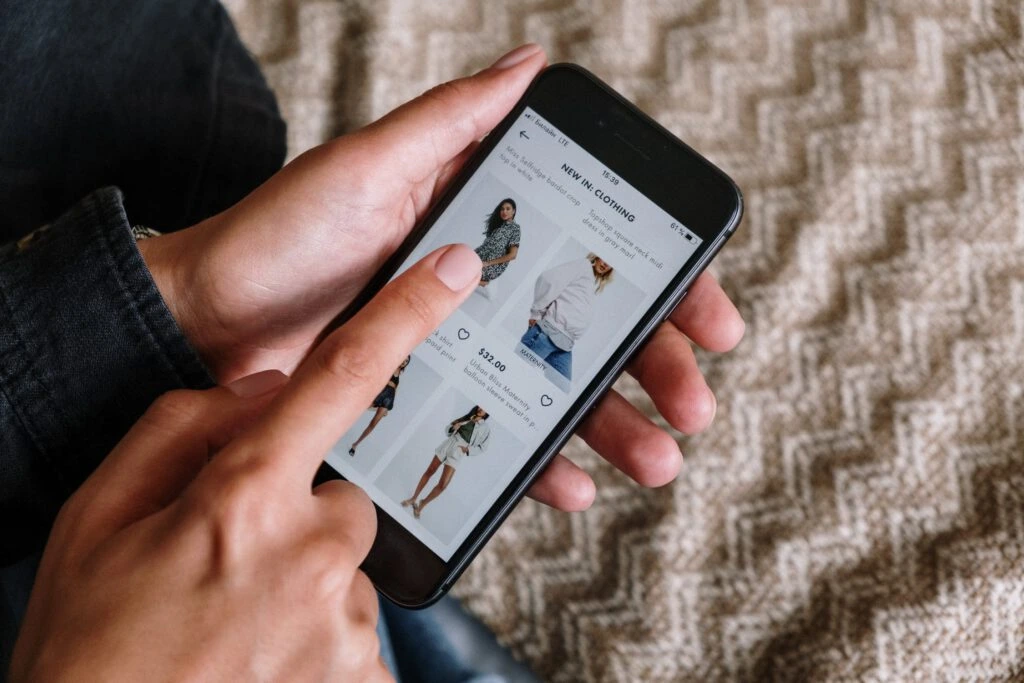Influencer marketing is a content generation powerhouse. Brands that leverage influencers well can mobilise large, captive audiences of potential buyers who rely on their favourite Instagram, YouTube and TikTok accounts for product recommendations. More and more, influencer stores are becoming part of the marketing mix.
Authenticity and brand trust are core values for younger consumers. Social media users who engage with influencers look for creators they view as authentic and engaged with their audiences. Ninety percent of customers mention authenticity as an important factor in
deciding which brands they like.
Building a genuine connection with influencers and their audience allows brands to tap into a goldmine of potential revenue. As influencers seek to monetise their audiences, they use affiliate marketing tools, including influencer stores, to generate that income.
What Is an Influencer Store?
For years, influencers have utilised affiliate links or coupon codes to share products with their audiences. Amazon Associates is one of the most well-known affiliate programs. Still, bloggers and influencers have access to dozens of other large affiliate networks, as well as individual companies that provide links for their websites.
Influencer stores take the affiliate concept to the next level. Influencer stores are custom storefronts that offer the products they endorse. Influencers generally have more control over the brand look and feel of their storefront and can upload banners and profile pictures that signal to their audience that they are in the right place.
This concept is more appealing to social media influencers who are not doing their marketing through their own website. Link sharing on Instagram, TikTok and YouTube can be very limited. Sharing an influencer storefront allows content creators to curate categories of products they recommend as well as update and add to their storefronts as they go along. This minimises disruption or broken links for followers as they browse the recommended products.
An influencer storefront also gives creators complete autonomy over the product categories and individual products they promote. Some influencers have a narrow brand niche and only want to promote products that fall within that area of expertise.
And finally, an influencer’s audience can “follow” a creator’s storefront and get notifications about new products and categories. This allows influencers to keep their audience engaged, even if they are not actively promoting a product or social media algorithms do not serve up all of their posts to their audiences.
Where Are Influencer Stores?

Today, influencer stores are most popular on Amazon. Influencers with an audience of as little as 200 can create a storefront on Amazon and begin sharing their links. Amazon is also an excellent place for many creators to start because they offer a wide variety of products. However, other retailers offer influencer storefronts as well.
Target has a significant number of influencer stores in their Creators section. Target’s Creator’s site has a collection of photographs introducing each influencer, and their creator pages include links to their social media pages as well as their categories of curated items.
Brands can also stand up dedicated influencer storefronts outside of marketplaces. Stand-alone sites can be flexible and allow brands to offer unique pricing and logistics options based on the influencer’s reach and number of followers. This level of customisation allows the brand and the influencer to negotiate details directly with one another. Additionally, both parties can retain more revenue as neither owes marketplace fees.
Apart from dedicated storefronts, many brands collaborate with influencers to create special collections or limited-edition items. For example, Young House Love has a lighting collection with Shades of Light, and Charly Jordan has a fragrance collection with Sonya Dakar.
However, influencer stores will only become more popular as new influencers from TikTok, Instagram and Youtube influencers continue to create a significant online presence and look for opportunities to share their favourites with their audiences. Brands that offer influencers a simple and easy way to create storefronts will reap the benefits of funnelling these captive audiences to a curated landing page.
How Influencer Stores Boost Business
Consumers trust their favourite influencers to recommend brands. In recent years, TikTok and other social media platforms have allowed consumers to connect with everyday people who create content for a particular niche or have unbridled enthusiasm for a subject or activity. These influencers, even if their followings are small compared to celebrities, have a deeply loyal and trusting audience.
And brands that foster the right collaborations and connections with influencers see a greater return on their marketing dollars. Brands receive, on average, a $5.20 return on every marketing dollar spent compared to $2.63 on digital advertising.
Additionally, younger audiences are spending more time than ever on social media and use those platforms to shop and search for products. According to Deloitte, “Direct purchasing via social media networks continues to grow by a double-digit annual growth rate — from an estimated $36.6 billion in the U.S. in 2021 to $79.6 billion by 2025.” This means that brands can no longer ignore social media or only run simple ads on these platforms. Marketing strategies and campaigns should be nimble enough to tap this growing market, and influencers are one of the best ways to stay ahead of the trends.
Popular Examples of Influencer Stores
Amazon influencers have created their niches in about every marketplace. Here are a few fashion and beauty influencers who set the standard for excellent influencer stores:
Paige Desorbo. Paige is known for her looks and wardrobe on Bravo’s “Summer House,” and her Amazon page is filled with categories from her live streams, shoes, seasonal wear and date night looks, just to name a few.
Nita Danielle. Nita is a plus-size creator whose stunning store showcases photos of her own looks along with Amazon links for each item. She does not only feature fashion items; she includes categories for home goods and products for children.
Carla Stevenné. Carla’s “Beauty by Carla” storefront showcases each of the products she uses in her makeup looks. Each category has a short video tutorial of a makeup look, and under the video, the products she features are available to add to a cart. This makes it simple for followers to get the exact product and learn how to apply it at the same time.
Create Influencer Stores with ESW
DTC brands want to retain as much revenue as possible. Instead of sending influencers to create stores on Amazon’s storefronts, brands should offer opportunities for influencers to curate products on their own storefronts hosted by brands.
ESW gives brands the ability to create world-class storefronts for influencers without lots of overhead and headache. Specialty stores through ESW offer a convenient and fully customisable way for influencers to drive traffic to a brand’s website. Shoppers can purchase items recommended by their favourite influencers and brands get the sales as well as the customer data and targeting for future sales opportunities.
Learn more about how to set up your own influencer storefronts by contacting ESW today.





